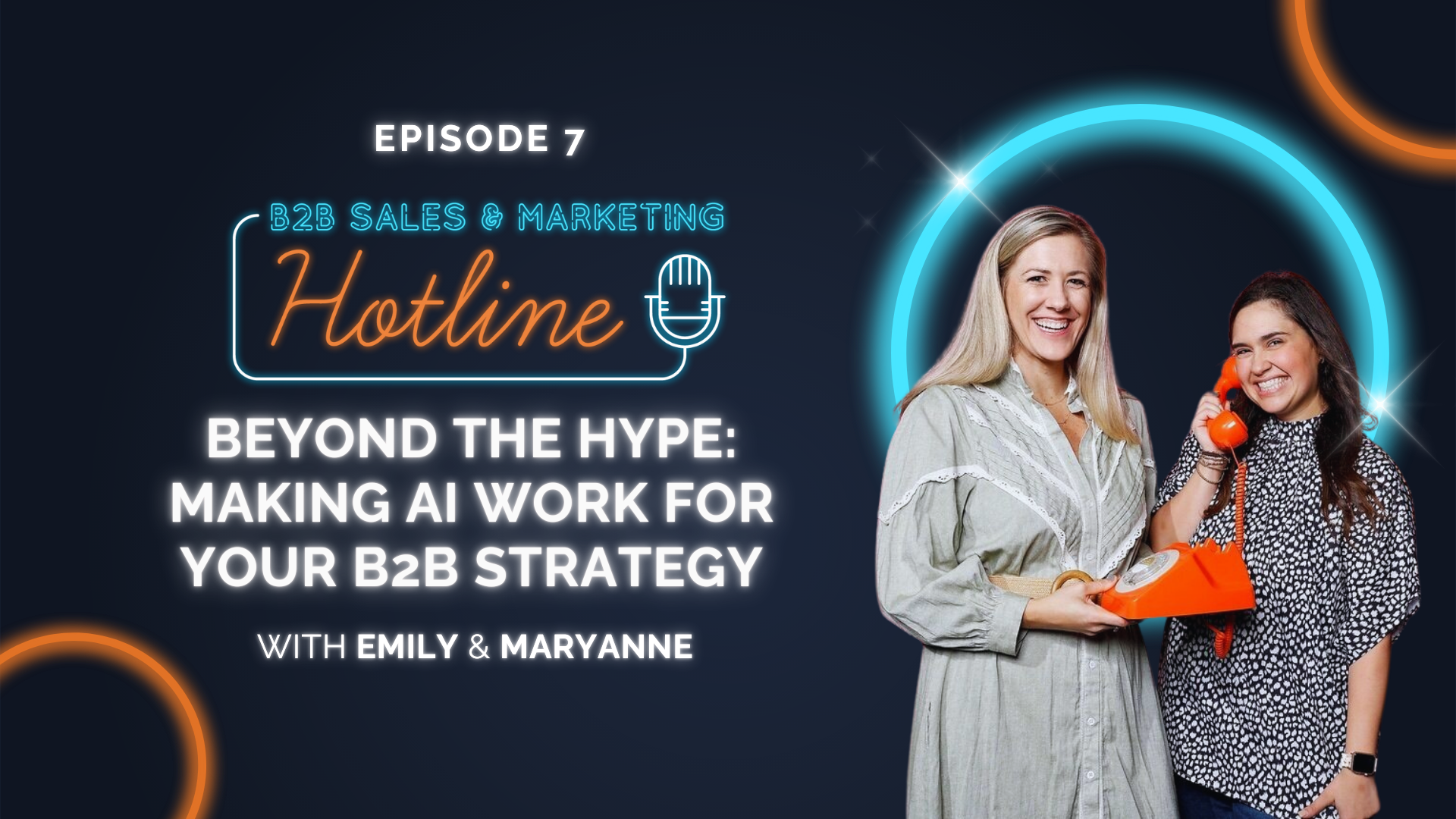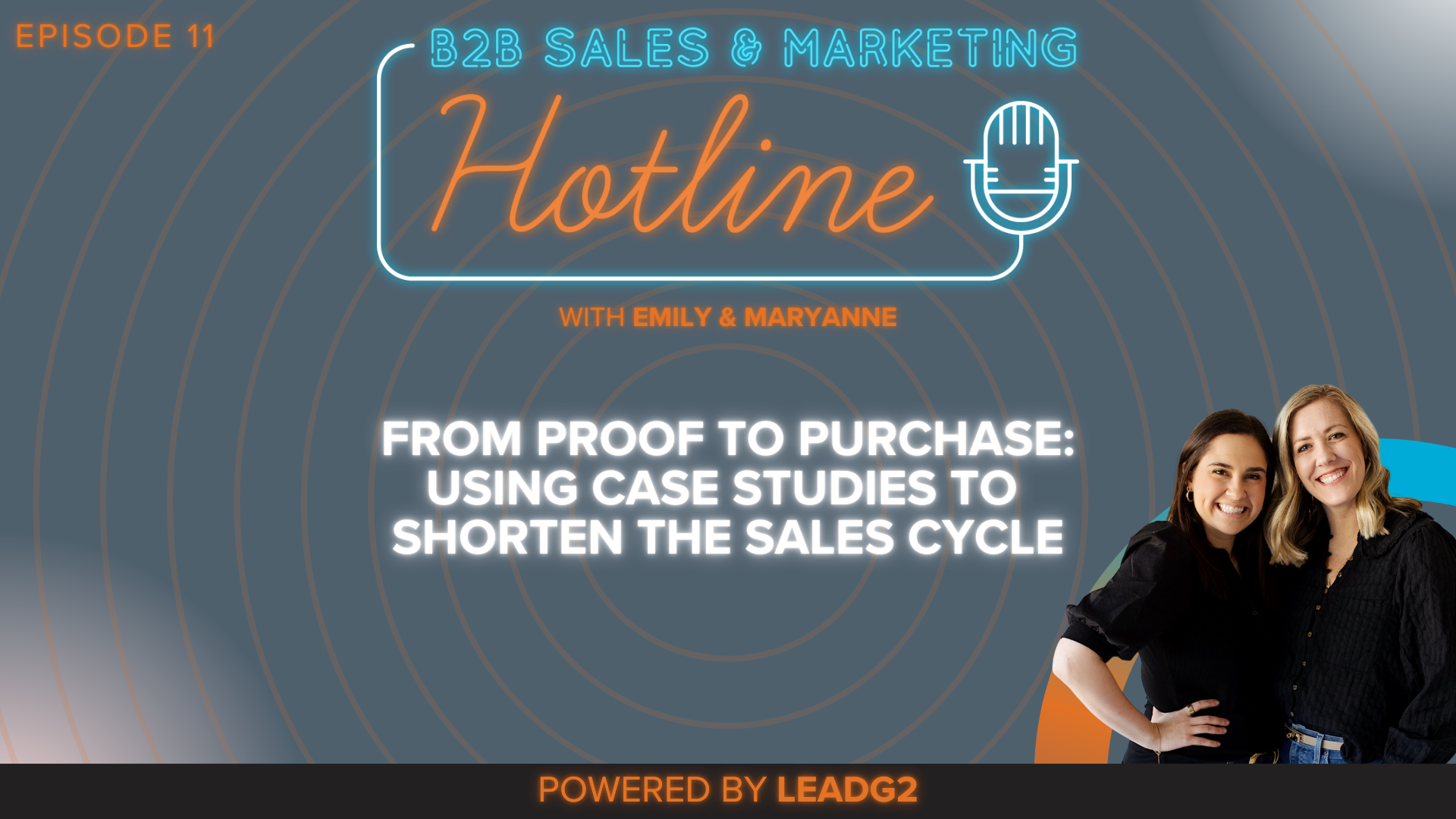1 min read
4 min read
Becoming a Thought Leader: How to Build Trust in B2B Relationships
 Brent Tripp
:
April 3, 2025
Brent Tripp
:
April 3, 2025
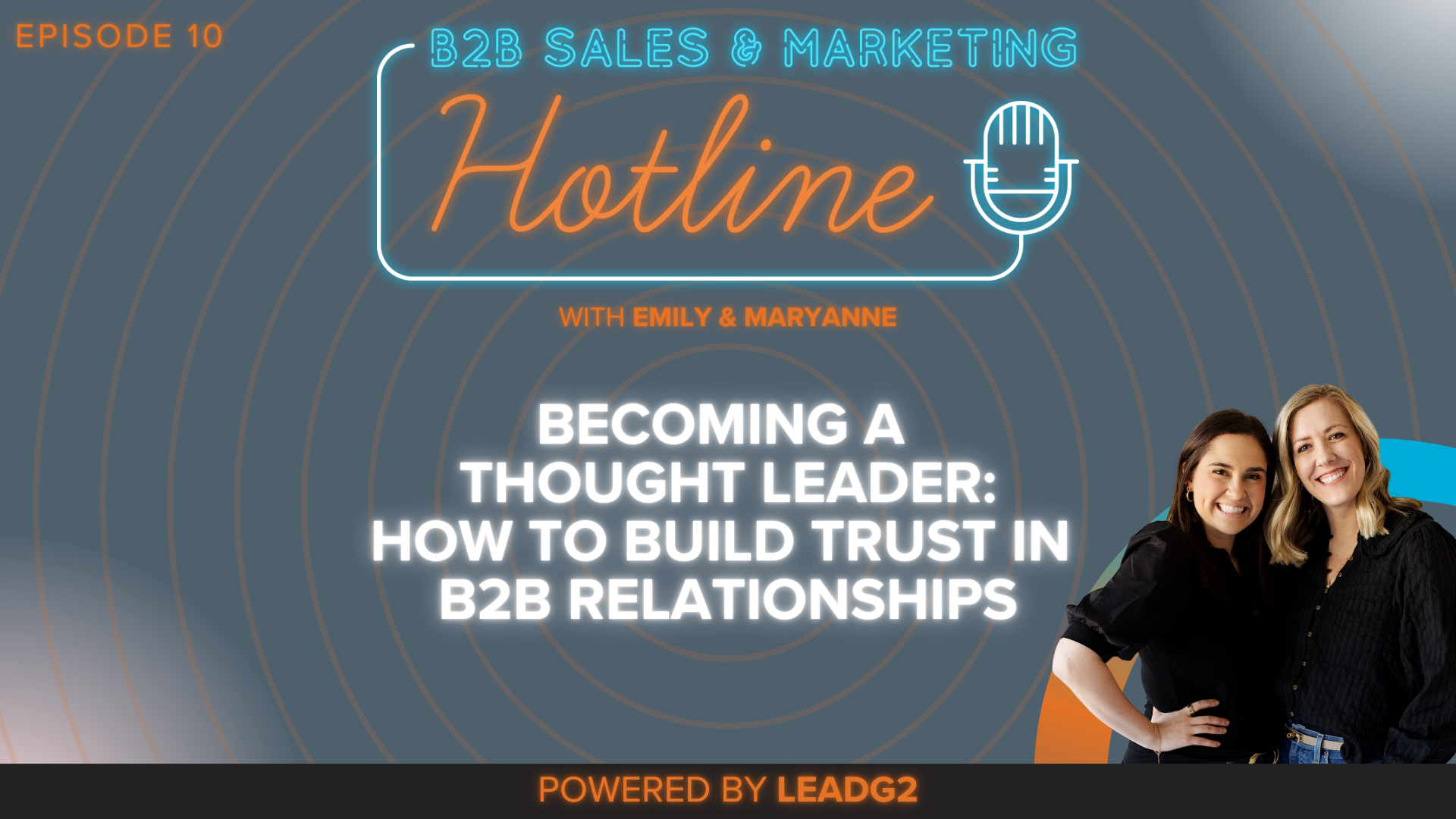
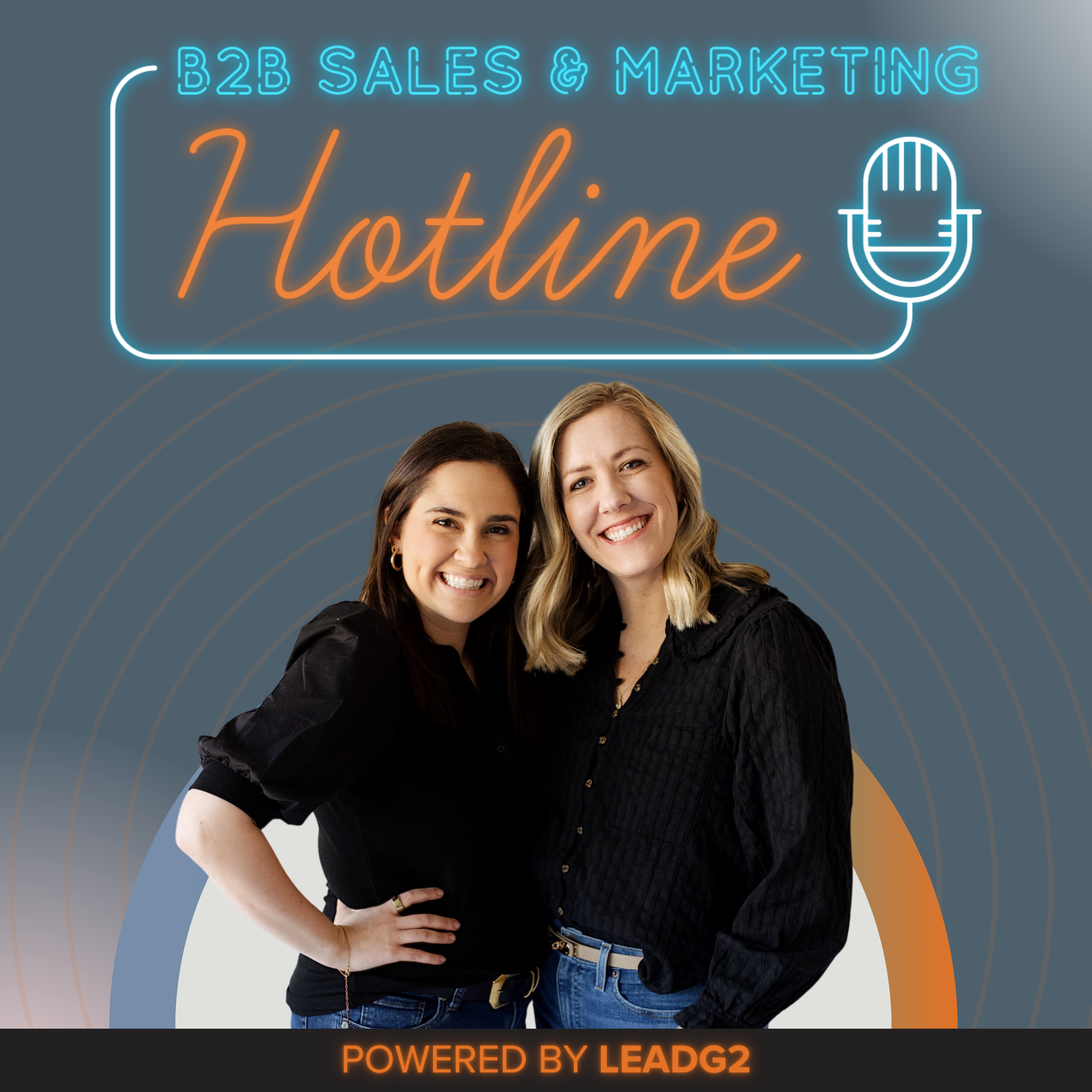
In this episode of the B2B Sales and Marketing Hotline, Emily and Maryanne explore how becoming a thought leader helps build trust in B2B relationships.
Together, they break down:
- How to define and differentiate thought leadership from personal branding in the B2B context.
- Simple strategies to get started with thought leadership using content you already have, such as company materials and industry publications.
- And, finally, how consistency, engagement with others, and authentic sharing are crucial to building trust and standing out as a thought leader in B2B sales.
What is Thought Leadership?
Thought leadership is often misunderstood, with many confusing it for just another buzzword. Emily and Maryanne define thought leadership in the B2B space as sharing insights, strategies, and innovative ideas that shape how you do business and serve your clients. It goes beyond simply broadcasting your personal opinions—true thought leadership adds value by providing thoughtful perspectives that resonate with your audience.
Thought leadership is about positioning yourself as an expert, but it’s not just about promoting yourself. Instead, it's about consistently sharing content that teaches, educates, and offers valuable insights. Whether it’s a blog, a LinkedIn post, or a podcast, thought leadership helps you build a strong personal brand that reflects your expertise.
The Difference Between Thought Leadership and Personal Branding
While personal branding is often seen in the context of B2C marketing, in B2B, personal branding can essentially be seen as an extension of your thought leadership. The core difference lies in the intention and execution: thought leadership focuses on sharing knowledge and insights, while personal branding is about cultivating an image of who you are as a professional.
In practice, these concepts often overlap. By sharing your expertise and helping others, you naturally develop a personal brand. Whether through a podcast, blog, or LinkedIn, you're building an authentic connection with your audience.
Content Creation: The Heart of Thought Leadership
Creating valuable content is a key element of thought leadership. However, Emily and Maryanne stress that content sharing alone isn’t enough. To be recognized as a true thought leader, you must add context to the content you share. Simply reposting others’ content without any added insight does not constitute thought leadership. You need to explain why it matters, how it applies to your audience, and what unique perspective you bring.
Here are some ways you can start sharing valuable content:
-
Leverage Your Company's Content: Use sales enablement materials, marketing content, and even your company’s website to start sharing your insights. Comment on what you find interesting or share your experiences related to the topic. By personalizing existing content, you position yourself as a thought leader while also promoting your company’s message.
-
Follow Industry News: Subscribe to newsletters or publications that are relevant to your industry. Share interesting articles with your followers and add your unique perspective to them. This shows you're engaged in current trends and allows you to continuously feed fresh ideas into your thought leadership strategy.
-
Engage on Social Media: LinkedIn is a common platform for B2B thought leadership, but Twitter and other social platforms can also be effective. Regularly post, comment, and engage with your network. The more you share and interact with others, the more visible you become as a trusted expert.
Consistency is Key
Thought leadership isn’t a one-off effort—it’s about being consistent. Building trust and credibility takes time, so posting occasionally won’t cut it. Emily and Maryanne emphasize that consistency in posting and engaging with others is vital. When you're active in sharing valuable content, you're building relationships with your audience, and this relationship-building process can be crucial when it comes time to close a deal.
By regularly posting and interacting with your network, you position yourself as someone who can be relied on for insights, advice, and fresh ideas. The more often people see you engaging, the more likely they are to trust your expertise.
How AI Can Support Thought Leadership
AI tools like ChatGPT or Gemini can play a helpful role in thought leadership without replacing the personal touch. While AI can’t create the authentic voice that comes with true thought leadership, it can be used to streamline content creation. For instance, AI can help you develop a content strategy or come up with ideas for posts based on current trends, statistics, or news articles that are relevant to your industry.
However, it’s important to note that AI should be used to assist—not replace—the personal, human element that is key to building trust with your audience.
Measuring the Impact of Your Thought Leadership
One of the challenges with thought leadership is measuring its impact. Unlike direct sales activities, it’s often difficult to attribute a sale or conversion to your thought leadership efforts. But there are ways to measure success.
Here are a few ways to track your thought leadership impact:
-
Engagement Metrics: Monitor how many people are liking, commenting on, and sharing your posts. These metrics give you an idea of how your content is resonating with your audience.
-
Growth in Followers: Keep track of your followers on LinkedIn or other platforms. If your following grows over time, it's a good indicator that your thought leadership efforts are gaining traction.
-
Lead Generation: Pay attention to how many leads or opportunities you generate as a result of your social media activity. If people reach out to you based on your posts or comments, that’s a good sign that you're building trust.
Pitfalls to Avoid in Thought Leadership
While the idea of thought leadership may seem straightforward, there are several pitfalls to avoid:
-
Inconsistency: Thought leadership is a long-term strategy, and inconsistency can derail your efforts. Make it a habit, and don’t expect immediate results.
-
Neglecting Engagement: It’s not enough to post your own content. Engage with others’ posts and start conversations. This helps you build relationships with your audience and makes you visible to a wider network.
-
Sharing Only Your Own Thoughts: Thought leadership isn’t about repeating the same thing over and over. Include external perspectives, research, and industry trends to add more value to your posts.
-
Being Overly Promotional: Thought leadership should be about offering value, not constantly pushing for a sale. Focus on providing insights and helping your audience solve problems.
Final Thoughts
Positioning yourself as a thought leader takes time, effort, and consistency. By regularly sharing valuable insights, engaging with your audience, and using AI tools to streamline your content creation, you can build trust and become an influential figure in your industry.
Remember, thought leadership is about helping others, providing value, and establishing yourself as an expert in your field. Stay consistent, keep adding value, and watch your influence grow!
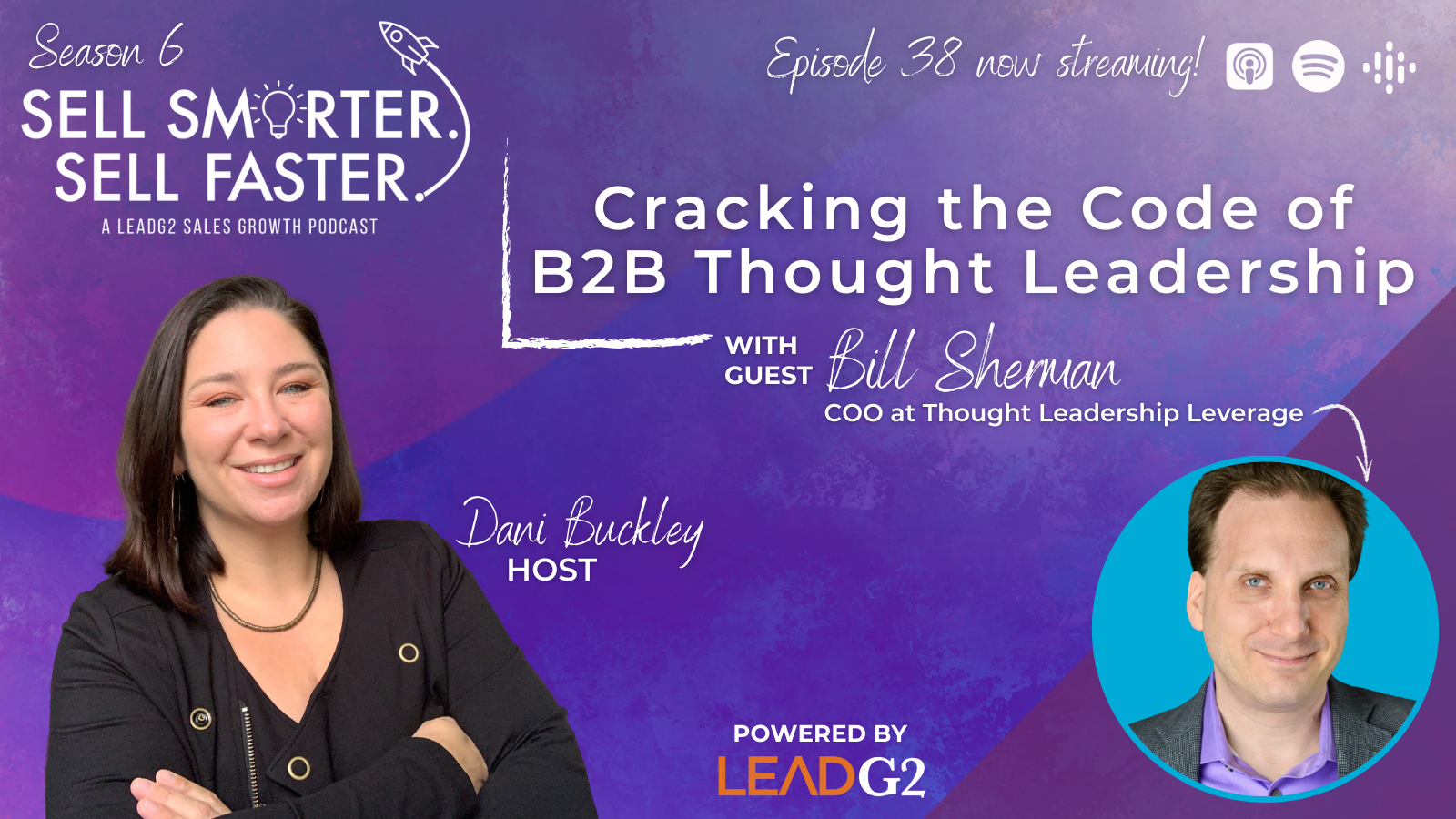
Cracking the Code of B2B Thought Leadership with Bill Sherman
In this episode, we're breaking down how thought leadership can play an important role in maximizing your B2B sales efforts. Here we tackle...
.png?width=2250&height=647&name=LeadG2-logo_(2).png)
